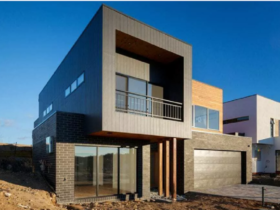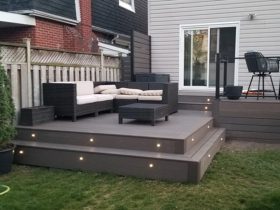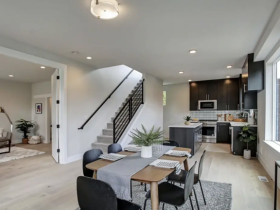Iconic Architectural Features That Stand the Test of Time
Throughout history, architecture has evolved in countless ways — yet certain features have proven so functional, beautiful, or symbolic that they remain beloved across centuries and cultures. These design elements continue to inspire modern buildings, showing how the past shapes the spaces we live and work in today. Below are seven architectural features that have truly stood the test of time.
1. Arches
The arch is one of the most enduring and recognizable forms in architecture. First perfected by ancient civilizations such as the Romans, the arch distributes weight evenly and allows for larger spans than flat lintels. This innovation made monumental structures like aqueducts, cathedrals, and bridges possible.
Even today, arches are used for both structural and aesthetic purposes. From grand entryways to subtle interior accents, their graceful curves add elegance and strength. Many Los Angeles architects incorporate arches in contemporary residential and commercial designs, blending classic style with modern functionality.
2. Columns
Columns are not only functional support structures; they are also key visual elements that convey style and symbolism. From the simple Doric columns of ancient Greece to the ornate Corinthian variety, columns have been a mainstay of architecture for millennia.
Modern designers often reinterpret this timeless feature, using columns to frame spaces, create rhythm along façades, or add a sense of grandeur to interiors and exteriors. Whether made of stone, steel, or concrete, columns remain a powerful tool for shaping form and proportion in architecture.
3. Domes
Domes have long captured the imagination of architects and admirers alike. With origins in ancient Mesopotamia and Egypt, domes became a defining feature of Roman, Byzantine, and Islamic architecture. Their hemispherical form not only provides immense structural stability but also creates awe-inspiring interior volumes.
Today, domes continue to symbolize innovation and spirituality. They are found in everything from capitol buildings and museums to modern sports arenas and cultural centers. Advances in materials and engineering have allowed architects to create larger, lighter, and more expressive domed structures than ever before.
4. Vaulted Ceilings
Like arches, vaulted ceilings emerged from the ingenuity of ancient builders seeking to span large spaces with elegance and strength. Barrel vaults, groin vaults, and ribbed vaults became essential in Romanesque and Gothic architecture, shaping the interiors of cathedrals and castles.
In modern design, vaulted ceilings are prized for their ability to enhance spatial experience, bringing height, light, and drama to interiors. Whether in a historic restoration or a contemporary home, vaulted ceilings help create spaces that feel open, airy, and timeless.
5. Ornamental Molding
Ornamental moldings — such as cornices, friezes, and baseboards — have been used throughout history to frame architectural elements and add decorative richness to interiors and exteriors. These details were hallmarks of classical, baroque, and neoclassical styles, emphasizing craftsmanship and artistry.
Today’s architects and designers often incorporate simplified or modernized versions of moldings to add texture, depth, and character to buildings. Even in minimalist spaces, subtle trim and detailing can enhance visual interest while paying homage to historical traditions.
6. Clerestory Windows
Clerestory windows — high windows placed above eye level — originated in ancient Egyptian temples and became a defining feature of Gothic cathedrals, where they flooded vast interiors with light. The idea was simple yet transformative: bring natural light deep into large structures while maintaining privacy and wall space below.
In modern architecture, clerestory windows remain a popular feature, especially in sustainable and passive solar designs. They maximize daylight, reduce reliance on artificial lighting, and help ventilate interiors naturally. This timeless feature aligns with contemporary goals of energy efficiency and well-being.
7. Courtyards
The courtyard is one of the oldest architectural features, dating back to early domestic structures in the Middle East and Mediterranean regions. Designed as an open space surrounded by walls or buildings, the courtyard offered privacy, security, ventilation, and a place for social gatherings.
Courtyards are still celebrated for their ability to connect indoor and outdoor spaces seamlessly. In warm climates, including much of California, they provide a serene retreat that encourages natural airflow and daylighting. Many architects integrate courtyards into their designs to create peaceful, functional environments that honor both tradition and modern living.
These seven architectural features demonstrate that great design transcends time. Whether structural, decorative, or functional, these elements continue to shape the built environment, reminding us of the enduring connection between the past and present. By thoughtfully incorporating these iconic features, architects craft spaces that not only meet modern needs but also pay tribute to centuries of human creativity and innovation.
Leave a Reply
You must be logged in to post a comment.

















Leave a Reply